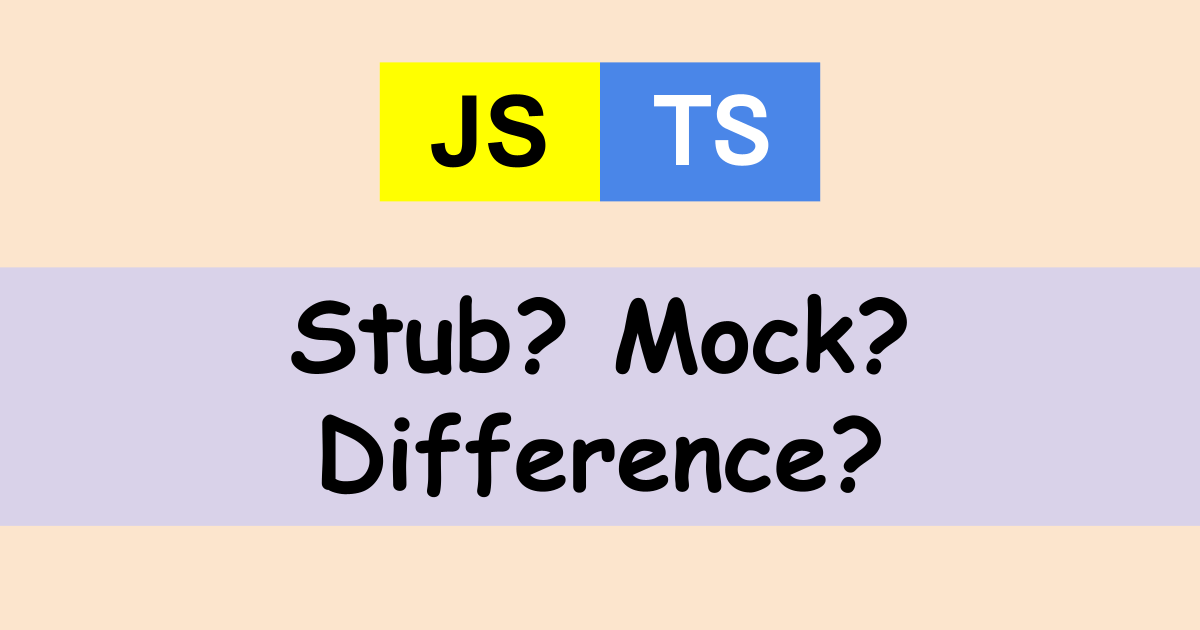Mocks and Stubs are essential tools in software development, particularly during unit testing, where they serve as placeholders for actual components. These test doubles allow developers to bypass using real elements in tests.
If you’re a developer, you might have found yourself puzzled over the stub vs mock differences. In this article, we’ll walk through what is mock and stub, including their roles in testing. Also, delve into the difference between mock and stub based on various aspects. Let’s dive in!
I. What is a Stub?
A stub is a simplified version of a real object created through limited methods. It contains preset data and returns a fixed value, no matter the input. Stubs are useful for straightforward test scenarios where fixed values are not problematic. Both developers and testers employ them. However, sharing stubs can be difficult due to the specific hard-coded resources, deployment dependencies, and platform issues.

Stubs can also be applied in Hypertext Transfer Protocol (HTTP) communications, often called virtual services, and are useful for replicating database objects. A stub serves as a placeholder module for testing while the real module is under development. Additionally, it helps to prevent potential problems that might occur with the real object’s implementation.
II. What is Mock?
A mock is a programmed interface that compares actual test results with expected outcomes. Tools like Mockito and JMock are often used for this purpose. It proves useful in large test suites where each test requires its own data set.
In such cases, using a stub can become prohibitively costly. A mock facilitates maintaining specific data configurations for tests. It is a tool that both developers and testers can utilize. However, it’s not feasible to share it widely due to compatibility issues, such as hardcoded resources, deployment dependencies, and platform differences.

Moreover, a mock can track the frequency and sequence of method, function, or object calls and oversee class interactions. The ‘mock()’ method is typically employed for creating mocks.
Learn More On:
III. What is the difference between Stub and Mock?
| Feature | Stub | Mock |
|---|---|---|
| Usage Context | Ideal for simple test scenarios where the focus is on the state of the system under test rather than its behavior. | Best suited for complex test scenarios involving extensive test suites, where verifying the behavior and interactions between objects is crucial. |
| Principle | Operates on the principle that multiple stubs can be used within a single test to represent different objects or states. | Based on the principle that a single mock test is used to focus on the interaction and behavior verification of the system under test. |
| Test Lifecycle | Involves a straightforward lifecycle: Setup (prepare the object and its collaborators), Exercise (test the functionality), Verify state (using asserts), and Teardown (cleanup). | Features a more detailed lifecycle: Setup data (prepare objects), Exercise (test functionality), Verify expectations (ensure correct methods are followed), Verify state, and Teardown. |
| Execution | Stubs can be executed directly by developers or with the aid of simple tools without the need for complex configurations. | Mocks require the use of specialized third-party libraries, such as JMock, Mockito, and WireMock, which offer advanced features for behavior verification. |
| Main Purpose | Primarily used to replace real objects with simplified versions that return consistent results, making tests easier to predict and control. | Utilized to thoroughly test the interactions and behavior of objects within the system, ensuring that objects communicate and function together correctly. |
| Compatibility | Stubs may face compatibility issues due to hard-coded resources, deployment dependencies, and platform-specific behaviors, limiting their shareability. | Similar to stubs, mocks also face compatibility challenges that prevent sharing with a broader community, primarily due to the specific configurations and expectations set within the mock. |
| Data Configuration | Stubs maintain a constant value regardless of input, simplifying the test environment but offering less flexibility for dynamic testing scenarios. | Mocks allow for dynamic data configuration, accommodating tests requiring unique data sets or conditions and offering greater flexibility in testing complex scenarios. |
| Method Tracking | Typically, stubs do not track method calls or the order of calls, as their primary function is to return pre-defined responses. | Mocks can track the frequency and sequence of method calls and the interactions between classes, providing detailed insights into the system’s behavior. |
| Verification Style | Stubs are used for state verification, which focuses on the final state of the system under test after operation. | Mocks emphasize behavior verification, validating the sequence of operations and interactions, which is critical for ensuring correct system behavior. |
| Flexibility | Stubs offer limited flexibility as they are designed to provide fixed responses, making them less suitable for tests where the system’s response might vary. | Mocks offer greater flexibility in testing, as they can be programmed with various expectations and responses, adapting to different testing scenarios. |
| Complexity | Generally simpler to implement and understand, making them a good choice for straightforward testing needs. | More complex due to their focus on behavior and interactions, requiring a deeper understanding of the system’s inner workings. |
Have a Project Idea in Mind?
Get in touch with experts for a free consultation. We’ll help you decide on next steps, explain how the development process is organized, and provide you with a free project estimate.
IV. When to use a Stub vs mock?
When deciding between using a stub and a mock in testing, it’s essential to understand their distinct purposes and applications based on various online sources.
1. When to use Stubs
Stubs are primarily utilized to set up indirect inputs of the System Under Test (SUT), providing predefined responses to specific calls. They are simple implementations that simulate the behavior of real objects with the minimum methods needed for a test.
Stubs are ideal for state testing, where the focus is on the outcome and behavior of the actual object being tested, highlighting the test stub vs mock consideration. They allow for the simulation of scenarios without the complexity of the actual dependencies, making them suitable for tests where the interaction with the object is not what’s being verified.

2. When to use Mock
Mock, on the other hand, is used to verify interactions between the SUT and its dependencies, making it more suitable for behavior testing and underscoring the mock and stub difference. It can be used to assert both indirect inputs and indirect outputs of the SUT, checking if the correct methods are called with the right parameters and in the correct order.
Mocks are more advanced than stubs as they can track how often a method is called and ensure that the communication between classes or components meets the expectations. This makes mocks particularly useful in complex scenarios where the interaction between objects is a critical aspect of what is being tested.
Conclusion
Understanding the nuanced differences between stubs vs mocks is crucial for effective software testing. Stubs offer a straightforward approach for testing system states with fixed responses, which is ideal for simpler scenarios. Mocks, however, provide a more sophisticated means to examine the interactions and behaviors within a system, which is essential for complex testing environments. Choosing the right tool—stub or mock—depends on the specific requirements of your test scenario.
For those navigating the complexities of software development and testing, partnering with an experienced provider can make all the difference. TECHVIFY is your go-to source for top-tier software development services. If you want to elevate your software development projects with reliable, professional support, contact TECHVIFY today and discover how we can help you achieve your goals precisely and excellently.
TECHVIFY – Global AI & Software Solution Company
From Startups to Industry Leaders: TECHVIFY prioritizes results, not just deliverables. Accelerate your time to market and see ROI early with high-performing teams, AI (including GenAI) Software Solutions, and ODC (Offshore Development Center) services.
- Email: [email protected]
- Phone: (+84)24.77762.666





